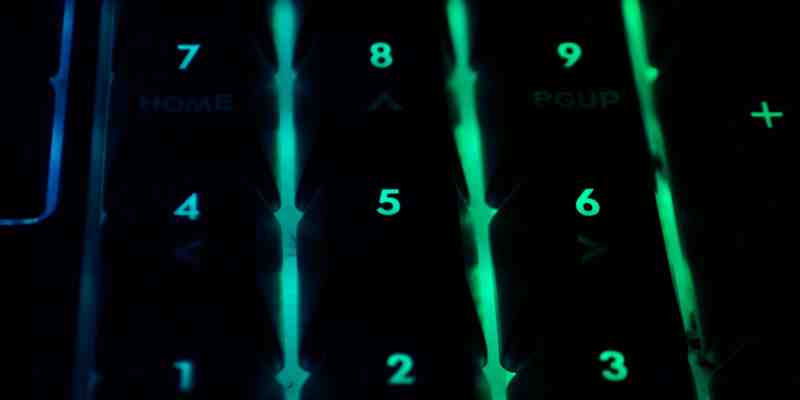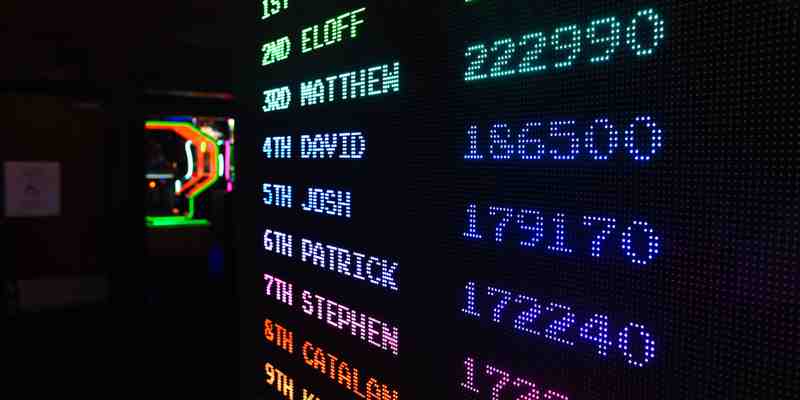Chinese Numbers Part II: A Guide for Numbers Above 1000 in Mandarin
Before reading this article, make sure you finished reading Chinese Numbers up to 1000, for a fundamental introduction to Chinese characters for the numeral system as well as detailed guidance for numbers below 1000 in Mandarin Chinese.
Now, starting from 1000, let's dive into Chinese numerals above and beyond.
Please note that this part is suitable for intermediate to advanced learners, as the rules get more complicated - but don't worry, we are still applying the same set of rules as introduced in Numbers up to 1000, just with more combinations, longer number lengths, and there are also different situations that require careful attention to.
The Basics

First of all, 1000 is 一千, which is 1+1000, just like 一百 for 100.
So, apply the same rules as we've gone over in Chinese Number Part I, for all the thousands, we have:
一千,两千,三千,四千,五千,六千,七千,八千,九千
(1k, 2k, 3k, 4k, 5k, 6k, 7k, 8k, 9k)
Similarly, starting from ten thousand to ninety thousand, we have:
一万,两万,三万,四万,五万,六万,七万,八万,九万
(10k, 20k, 30k, 40k, 50k, 60k, 70k, 80k, 90k)
And keep applying the same format, we can also get:
一亿,两亿……九亿 (100 million to 900 million)
一兆,两兆……九兆 (1 trillion to 9 trillion)
……
Again, note that for two times a number scale (above and equal to 百, hundred), 两 is used.
Numbers up to 100,000 (十万)

Similar to numbers within hundreds, when a number has 0 inside, we need to use 零 to connect different digit places. This is true, especially for big numbers.
See examples listed in the table below:
| Scale | Chinese Numeral | Pinyin | Number in Chinese Format | Arabic Numeral |
| 千 103 | 一千零二十 | yī qiān líng èr shí | 1020 | 1,020 |
| 两千零二 | liǎng qiān líng èr | 2002 | 2,002 | |
| 两千五百零八 | liǎng qiān wǔ bǎi líng bā | 2508 | 2,508 | |
| 三千零七十二 | sān qiān líng qī shí èr | 3072 | 3,072 | |
| 四千零九 | sì qiān líng jiǔ | 4009 | 4,009 | |
| 万 104 | 两万零六 | liǎng wàn líng liù | 2,0006 | 20,006 |
| 两万两千两百零二 or 两万两千二百零二 | "liǎng wàn liǎng qiān liǎng bǎi líng èr" or "liǎng wàn liǎng qiān èr bǎi líng èr" | 2,2202 | 22,202 | |
| 四万零三百零二 | sì wàn líng sān bǎi líng èr | 4,0302 | 40,302 | |
| 五万零七百 | wǔ wàn líng qī bǎi | 5,0700 | 50,700 | |
| 六万三千零二十 | liù wàn sān qiān líng èr shí | 6,3020 | 63,020 | |
| 七万八千九百零四 | qī wàn bā qiān jiǔ bǎi líng sì | 7,8904 | 78,904 |
As we can see above, as long as there is 0 between the first digit and the last digit, 零 is used. But only ONE 零 is used for consecutive 0s inside.
However, when there is more than one 0 inside the number, but they are separated by a non-zero digit place, then there can be two 零 used. See the example of 40,302, which is 四万零三百零二 in Chinese.
Another thing we need to pay attention to is the use of 两. For 千, 万, and so on, 两 is typically used. But for 十 or the 个 (digit) place, 二 is used!
For 百, both 两 and 二 are used commonly.
Some other examples without 零 are given here as well:
| Chinese Numeral | Pinyin | Number in Chinese Format | Arabic Numeral |
| 六千七百八 | liù qiān qī bǎi bā | 6780 | 6,780 |
| 一万二 | yī wàn èr | 1,2000 | 12,000 |
| 五万八千四 | wǔ wàn bā qiān sì | 5,8400 | 58,400 |
| 三万两千二 | sān wàn liǎng qiān èr | 3,2200 | 32,200 |
| 两万九千五百三 | liǎng wàn jiǔ qiān wǔ bǎi sān | 2,9530 | 29,530 |
| 四万一千一百二十六 | sì wàn yī qiān yī bǎi èr shí liù | 4,1126 | 41,126 |
As we can see here, when there are only 0s at the end, we can skip the last scale character at the end for 十、百、千 (一万二 rather than 一万两千, and 三万两千二 rather than 三万两千两百).
Also, pay attention that for the examples of 一万二 (12,000) and 三万两千二 (32,200), we must use 二 in the end, rather than 两. Even though we often use 两百/千 not 二百/千, if it's the end of a number word and the 百/千 is skipped, 二 must be used!
However, when there is 0 in between, then we can NOT skip the scale character. You can only skip it when it follows a non-zero number. See these two examples for comparison:
一万零三百, 10,300
两万零一百二(十), 20,120
See in the first example, 百 cannot be omitted, as it follows 零. Same for the second example, 百 must be included but 十 can be skipped, as the 十 place follows a non-zero 百 place.
I know all of this may seem complex, but really, we are still using the same rules as introduced for numbers below 1000.
And keep doing so, we can easily go up to 99,999: 九万九千九百九十九.
Numbers up to 108 (一亿)

Let's continue from a hundred thousand:
十万,二十万,三十万……九十万
(100,000 to 900,000)
一百万,两百万,三百万……九百万
(1 million to 9 million)
一千万,两千万,三千万……九千万
(10 million to 90 million)
Because the next number scale with a new character is 亿 (hundred million or 108), before we reach there, we need to keep adding scale characters in front of 万.
Again, pay attention to the use of 两 and 二, the same rules as above are followed.
Some examples of numbers in these scales are given below:
| Scale | Chinese Numeral | Pinyin | Number in Chinese Format | Arabic Numeral |
| 十万 105 | 十万三千零六 | shí wàn sān qiān líng liù | 10,3006 | 103,006 |
| 十六万五千八 | shí liù wàn wǔ qiān bā | 16,5800 | 165,800 | |
| 二十万零三百七 | èr shí wàn líng sān bǎi qī | 20,0307 | 200,370 | |
| 百万 106 | 两百七十二万零四百四 | liǎng bǎi qī shí èr wàn líng sì bǎi sì | 272,0440 | 2,720,440 |
| 三百二十万六千零四十 | sān bǎi èr shí wàn liù qiān líng sì shí | 320,6040 | 3,206,040 | |
| 四百八十万三千七百一 | sì bǎi bā shí wàn sān qiān qī bǎi yī | 480,3710 | 4,803,710 | |
| 五百一十二万零两百零七 | wǔ bǎi yī shí èr wàn líng liǎng bǎi líng qī | 512,0207 | 5,120,207 | |
| 千万 107 | 两千两百二十二万两千两百二十二 | liǎng qiān liǎng bǎi èr shí èr wàn liǎng qiān liǎng bǎi èr shí èr | 2222,2222 | 22,222,222 |
| 一千九百万(零)三千 | yī qiān jiǔ bǎi wàn (líng) sān qiān | 1900,3000 | 19,003,000 | |
| 两千四百七十万 | liǎng qiān sì bǎi qī shí wàn | 2470,0000 | 24,700,000 | |
| 三千六百万 | sān qiān liù bǎi wàn | 3600,0000 | 36,000,000 | |
| 六千万(零)两千二 | liù qiān wàn (líng) liǎng qiān èr | 6000,2200 | 60,002,200 | |
| 七千五百万零四百 | qī qiān wǔ bǎi wàn líng sì bǎi | 7500,0400 | 75,000,400 | |
| 三千万零四十 | sān qiān wàn líng sì shí | 3000,0040 | 30,000,040 | |
| 四千零一十万五千三百二 | sì qiān líng yī shí wàn wǔ qiān sān bǎi èr | 4010,5320 | 40,105,320 | |
| 八千零四万两千两百七 | bā qiān líng sì wàn liǎng qiān liǎng bǎi qī | 8004,2270 | 80,042,270 | |
| 九千七百五十万三千六百零二 | jiǔ qiān qī bǎi wǔ shí wàn sān qiān liù bǎi líng èr | 9750,3602 | 97,503,602 | |
| 九千九百九十九万九千九百九十九 | jiǔ qiān jiǔ bǎi jiǔ shí jiǔ wàn jiǔ qiān jiǔ bǎi jiǔ shí jiǔ | 9999,9999 | 99,999,999 |
As the numbers grow bigger, of course, the words also get longer. But if look closely, we are still applying the same set of rules for smaller numbers.
As emphasized previously, with large numbers, we need to especially pay attention to when to use 零, the use of 两 and 二, and when to skip a character.
ATTENTION: above 十万, we generally can only skip 十 and 百 at the end, anything above 千 and 万 must be written out to avoid confusion.
See the examples of 一千九百万(零)三千 (19,003,000), 两千四百七十万 (24,700,000), and 三千六百万 (36,000,000) where the ending characters of 千, 万 and 百万 are not omitted, even though these numbers end in a set of 0s.
I also want to repeat here that, for the example of 六千万(零)两千二 (60,002,200), the last character 二, stands for 200 at the end. But since we can skip the character 百 (following the non-zero 千 scale, and only 0s after), we must use 二 at the end, rather than 两. As mentioned above, if it's the end of a number word, 二 must be used!
This is the same as the cases of 一万二 and 三万两千二 mentioned in the previous section.
Something else worth pointing out is that we say 十万, 十一万…… and 十九万 for 100k, 110k, 120k…190k, where we don't add a 一 in front of the words.
But when they are wrapped inside a larger number, 一 must be included!
See the examples of 五百一十二万零两百零七 (5,120,207) and 四千零一十万五千三百二 (40,105,320) in the above table, pay attention to the 一 used inside these two numbers.
Numbers up to 1012 (一兆)
Going further, nothing new is added to the rules of writing numbers in Chinese. The only thing that's different is the number length.
First of all, 100 million, or 108, is 一亿 in Chinese, which we've already seen above.
With this information, I'll let you have a try with the following numbers first:
132,000,240 (hint, in Chinese numeral format: 1,3200,0240)
205,006,700 (hint: 2,0500,6700)
1,220,122,200 (hint: 12,2012,2200)
2,820,000,000 (hint: 28,2000,0000)
31,200,000,000 (hint: 312,0000,0000)
480,020,000,700 (hint: 4800,2000,0700)
Don't scroll down and peek yet!! Try to work these out yourself first!
(You can look at this beautiful picture below for the time being.)

Ok, do you have them written down?
Now, let's look at what they are in Chinese!
| Arabic Numeral | Number in Chinese Format | Chinese Numeral | Pinyin |
| 132,000,240 | 1,3200,0240 | 一亿三千两百万零二百四 | yī yì sān qiān liǎng bǎi wàn líng èr bǎi sì |
| 205,006,700 | 2,0500,6700 | 两亿零五百万六千七 | liǎng yì líng wǔ bǎi wàn liù qiān qī |
| 1,220,122,200 | 12,2012,2200 | 十二亿两千零一十二万两千二 | shí èr yì liǎng qiān líng yī shí èr wàn liǎng qiān èr |
| 2,820,000,000 | 28,2000,0000 | 二十八亿两千万 | èr shí bā yì liǎng qiān wàn |
| 31,200,000,000 | 312,0000,0000 | 三百一十二亿 | sān bǎi yī shí èr yì |
| 480,020,000,700 | 4800,2000,0700 | 四千八百亿两千万零七百 | sì qiān bā bǎi yì liǎng qiān wàn líng qī bǎi |
Did you get them right?
It's ok if you didn't, as we are reaching a large scale of billions and even hundreds of billions, things are getting more complex.
But again, nothing new is introduced here - just need to carefully apply all the existing rules.
Basically, we are adding a new number set in front of the scale of 亿 (108), to make the numbers all the way up to the scale of 千亿 (1011), approaching 一兆 (1 trillion, 1012).
To give you a better understanding of big numbers from 一亿 (108) up to 一兆 (1012), here are some more examples.
| Scale | Chinese Numeral | Pinyin | Number in Chinese Format | Arabic Numeral |
| 亿 108 | 一亿两千七百万 | yī yì liǎng qiān qī bǎi wàn | 1,2700,0000 | 127,000,000 |
| 两亿零五十四万六千二 | liǎng yì líng wǔ shí sì wàn liù qiān èr | 2,0054,6200 | 200,546,200 | |
| 三亿四千万(零)八千七百四 | sān yì sì qiān wàn (líng) bā qiān qī bǎi sì | 3,4000,8740 | 340,008,740 | |
| 十亿 109 | 十二亿零二十万 | shí èr yì líng èr shí wàn | 12,0020,0000 | 1,200,200,000 |
| 二十一亿八千两百二十万 | èr shí yī yì bā qiān liǎng bǎi èr shí wàn | 21,8220,0000 | 2,182,200,000 | |
| 三十八亿零两千二 | sān shí bā yì líng liǎng qiān èr | 38,0000,2200 | 3,800,002,200 | |
| 五十四亿零七百万(零)九千四 | wǔ shí sì yì líng qī bǎi wàn (líng) jiǔ qiān sì | 54,0700,9400 | 5,407,009,400 | |
| 九十亿三千两百万零两百 | jiǔ shí yì sān qiān liǎng bǎi wàn líng liǎng bǎi | 90,3200,0200 | 9,032,000,200 | |
| 百亿 1010 | 一百八十亿五千五百万 | yī bǎi bā shí yì wǔ qiān wǔ bǎi wàn | 180,5500,0000 | 18,055,000,000 |
| 两百一十亿零九十万 | liǎng bǎi yī shí yì líng jiǔ shí wàn | 210,0090,0000 | 21,000,900,000 | |
| 三百七十二亿零二万零两百 | sān bǎi qī shí èr yì líng èr wàn líng liǎng bǎi | 372,0002,0200 | 37,200,020,200 | |
| 四百零二亿六千万零三 | sì bǎi líng èr yì liù qiān wàn líng sān | 402,6000,0003 | 40,260,000,003 | |
| 千亿 1011 | 两千两百亿(零)四千万 | liǎng qiān liǎng bǎi yì (líng) sì qiān wàn | 2200,4000,0000 | 220,040,000,000 |
| 五千零七十亿九千两百万(零)两千 | wǔ qiān líng qī shí yì jiǔqiān liǎng bǎi wàn (líng) liǎng qiān | 5070,9200,2000 | 507,092,002,000 | |
| 六千亿(零)两千万(零)三千二 | liù qiān yì (líng) liǎng qiān wàn (líng) sān qiān èr | 6000,2000,3200 | 600,020,003,200 | |
| 七千两百亿零两百万零四百 | qī qiān liǎng bǎi yì líng liǎng bǎi wàn líng sì bǎi | 7200,0200,0400 | 720,002,000,400 | |
| 八千九百一十亿三千四百二十万五千 | bā qiān jiǔ bǎi yī shí yì sān qiān sì bǎi èr shí wàn wǔ qiān | 8910,3420,5000 | 891,034,205,000 | |
| 九千九百九十九亿九千九百九十九万九千九百九十九 | jiǔ qiān jiǔ bǎi jiǔ shí jiǔ yì jiǔ qiān jiǔ bǎi jiǔ shí jiǔ wàn jiǔ qiān jiǔ bǎi jiǔ shí jiǔ | 9999,9999,9999 | 999,999,999,999 |
Here, we list some very long and detailed numbers for demonstration purposes. However, in reality, when talking about large numbers on the scale of millions, billions, and even trillions, we would generally only use approximations.
For example, 三十八亿 works perfectly well than 三十八亿零两千二. There is generally no need to specify that 两千二 at the end, as they are just rounding errors compared to the entire number.
Nevertheless, it's still useful to know how to spell out complex numbers, and doing practices like this absolutely helps improve your Chinese language skills.
Going forward from 一兆 (a trillion), we'll still utilize all the same rules as we've seen so far. But since these huge scales of numbers are rarely used in our daily lives, we won't dive further.
After all, if you already made it as far as here, I'm sure you're well capable of saying numbers in Chinese on such unimaginable scales.
Next up in this series of articles, we will go over important usages for Chinese numbers and numerals - click here for a guide for basic number usages!